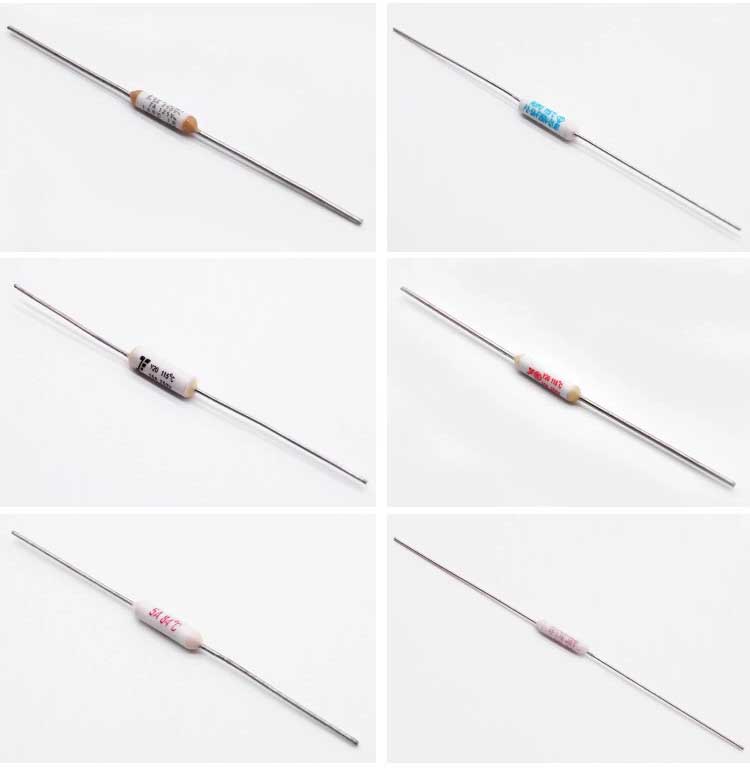Categorias de Produtos
- Disjuntor térmico 20
- Porta-caixa de fusíveis 36
- Sensor de temperatura 67
- Interruptor térmico 64
- Fusível do carro 19
- Fusíveis aparafusados 7
- fusível térmico 32
- fusíveis de montagem em superfície 12
- termistor 22
- Suporte de fusível para montagem em PCB 27
- Chicote de fiação 6
- Porta-fusíveis de lâmina 17
- termostato 46
- Fusível elétrico 14
Etiquetas de produto
Postagens recentes
Sefuse NEC SF Corte o serviço OEM/ODM de fusível térmico
Como saber se um fusível de temperatura do Sefuse NEC (Fusível Térmico) é bom ou ruim?
The following steps can be used to measure the quality of a temperature fuse (Fusível Térmico) :
Use a multimeter to measure the resistance value: Set the multimeter to the resistance value measurement position, and then connect two test pens to the two ends of the Thermal Fuse . If the fuse is not blown, its resistance value should be very small. If the fuse is blown, the resistance value will be a larger number. If you are not sure about the correct resistance value, you can refer to the product manual or consult the manufacturer.
 SF240E SEFUSE NEC CUTOFFS SERVIÇO TERMAL OEM ODM |
 SF96E SEFUSE Cutoffs NEC Thermal Fuse 99 Degree 10A 250V |
 SCHOTT SEFUSE® – Reliable thermal fuses for the protection |
Observe the color change: If the Thermal Fuse turns black or the resistance value is abnormally high, it needs to be replaced.
The following matters need to be noted during the measurement process:
Lead bending: When bending the lead, it should be bent from a part more than 6 mm away from the root, and the root and lead should not be damaged. Do not forcibly pull, imprensa, or twist the lead.
Welding operation: When welding the lead, the heating humidity should be limited to a minimum, and be careful not to apply high temperature to the thermal fuse. Do not forcibly pull, imprensa, or twist the thermal fuse and lead. After welding, it should be cooled for more than 30 seconds immediately.
Use conditions: Thermal fuses can only be used under the conditions of specified rated voltage, current and specified temperature. Pay special attention to the maximum continuous temperature that the thermal fuse can withstand.
Additional suggestions and common problems:
Replacing fuses: When a thermal fuse burns out, it needs to be replaced with a new fuse with the same voltage and rated temperature. Geralmente, thermal fuses are designed to be push-pull, so you only need to gently pull out the old fuse and insert the new one.
Regular inspection: When using electrical appliances, electronic equipment, and automobiles, it is very important to regularly check whether the thermal fuse is burned out.
| Nome do produto | Fusível Térmico, Fusível de temperatura, Corte térmico |
| Material corporal | Plástico, Cerâmica, Metal |
| Corrente classificada | 1-30UM |
| Tensão nominal | 250V |
| Lead Type | Axial, Radial |
| Temperatura | 70C-260C |
| Aplicativo | Over-Temperature Protection |
Thermal cut-off fuses of different brands and types:

Black Square 250V Thermal Fuse Cutoff LED Fuses

250V Circuit Cut-off Temperature Thermal Fuse Ceramics

SEFUSE NEC SF Cutoffs Thermal Fuse
Contate-nos
Aguardando seu e-mail, responderemos dentro de 12 horas com informações valiosas que você precisava.
 English
English العربية
العربية Български
Български 粤语
粤语 中文(简体)
中文(简体) 中文(漢字)
中文(漢字) Nederlands
Nederlands Suomi
Suomi Français
Français Deutsch
Deutsch Ελληνικά
Ελληνικά Magyar
Magyar Italiano
Italiano 日本語
日本語 한국어
한국어 Polski
Polski Português
Português Română
Română Русский
Русский Slovenščina
Slovenščina Español
Español Svenska
Svenska ภาษาไทย
ภาษาไทย Türkçe
Türkçe Tiếng Việt
Tiếng Việt

